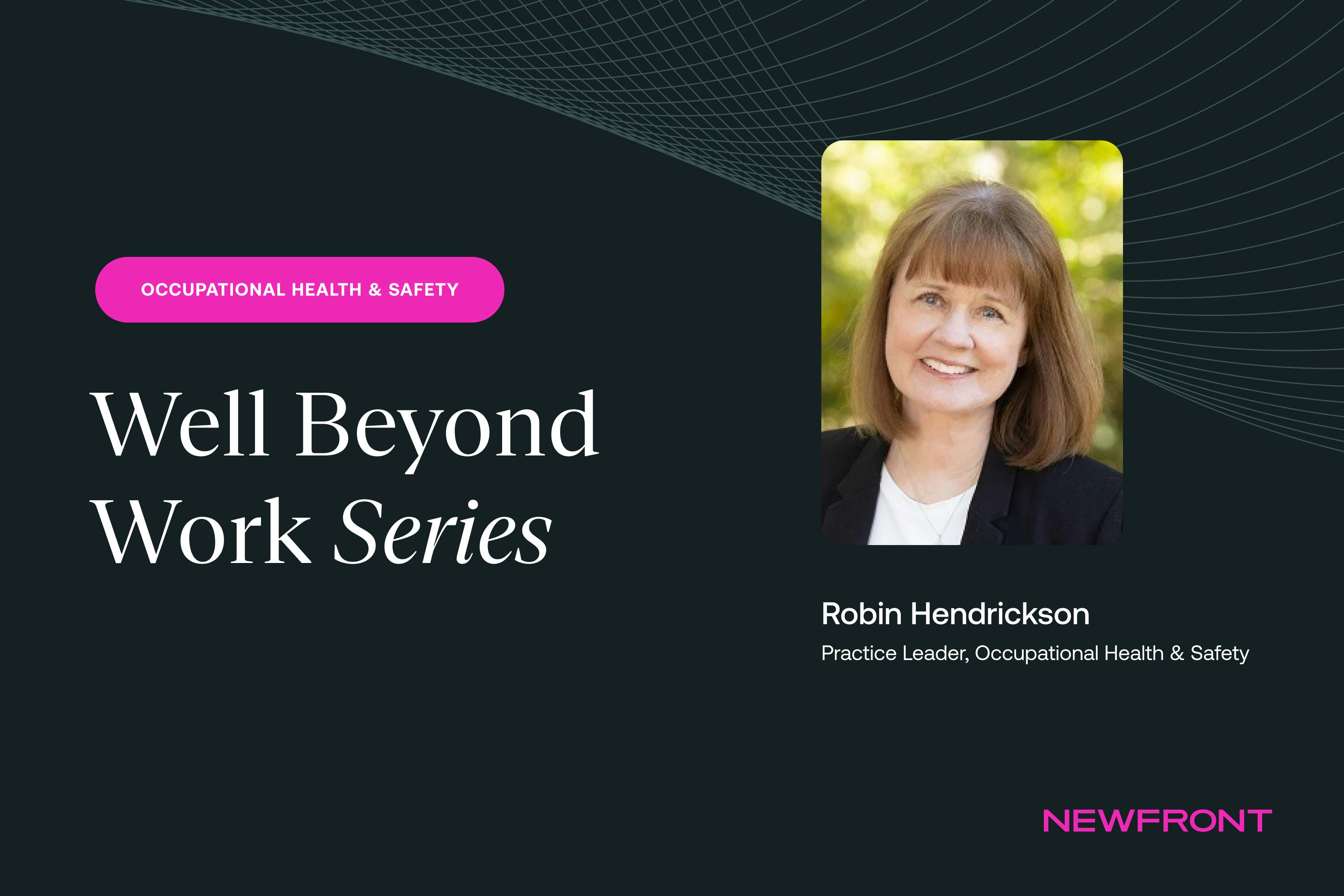Breaking Down Workplace Insurance Trends in 2023 - Including Those Confusing Acronyms
Published February 1, 2023

By the Newfront Occupational Health & Safety Team
As companies explore their insurance needs, they tend to focus on property losses or general employee benefits. For a true comprehensive review of risk, these conversations should also include occupational health and safety (OHS), including workers’ compensation.
The OHS team members at Newfront provide a holistic approach to risk management around promoting employee safety and wellbeing, and they recommend revisiting this strategy often as new trends arise frequently. Here are the top six trends to keep in mind, along with some suggestions our team of experts recommend discussing with your insurance professional, in 2023:
Visibility and partnership with company medical providers is key. When exploring workers’ compensation programs for your company, a connection with occupational medical providers is essential. Make sure your preferred provider network of physicians, hospitals, and ancillary providers for workers’ compensation medical care understand the dynamics of your workplace. These medical providers will then be able to better assist insured workers in return-to-work efforts and treatment resolution.
Newfront recommends that these providers perform semi-annual visits to the employer’s facilities to provide visibility for all parties, strengthen treatment plans, and create an ongoing partnership. Our OHS team can connect you with resources to begin or refine this approach.Don’t let the acronyms scare you. From DOI (date of injury) to DOL (date of loss) and beyond, the conversations around occupational health and safety, especially workers’ compensation, can seem confusing.
The Department of Industrial Relations provides a glossary of frequently-used terms, and the Newfront OHS team can help break down any unfamiliar language.Staying informed about OSHA compliance and changes to workers' compensation benefits can help keep your program current. Compliance with OSHA federal and state laws can be overwhelming. One key requirement for many companies is posting the summary of injuries each year. Additionally, rules around minimum and maximum total disability rates can change state-by-state each year (in California, they increased on Jan. 1). Talk with your insurance team about requirements to stay up to date across the company, especially if you operate in more than one state.
Prioritize your employee wellness programs. Most companies provide wellness programs aimed at encouraging employees to live healthier lifestyles, such as health coaching and online health assessments. Studies show (read here and here) that these programs reduce the frequency, duration, and costs of workplace injuries and claims. To meet demand, many employers are expanding their programs to focus on more than just physical health; more than 80 percent of workers say they are looking for workplaces that promote mental health, and 84 percent report that their workplace conditions had contributed to at least one mental health challenge.
The Newfront team can help you develop a plan to strengthen your workplace wellbeing program, prioritizing an innovative, inclusive, and multi-dimensional approach.Environmental health can bolster employee wellness. Over the past two years, we have seen the severe damage that harmful microbes and pathogens (such as the coronavirus pandemic) can cause for individuals, families, and businesses. Environmental health awareness, or making choices that benefit the Earth, can limit disease outbreaks and reduce the burden of disease.
The experts on Newfront’s OHS team can help identify ways, both big and small, for your company and employees to practice environmental awareness.The winter holidays may be over, but winter weather and associated dangers are not. An estimated 25,000 injury collisions occurred during wintry driving conditions in 2020. All drivers should inspect their vehicles and practice defensive driving.
The Newfront OHS risk control consultants can provide fleet safety guidance and training for clients to help reduce driving injuries, and the team can even provide advice for employees on non-work related winter dangers such as home fires.
While the world of occupational health and safety is broad, Newfront is here to help with tailored solutions that fit your company’s needs. Reach out to the team today for a consultation. Newfront's dedicated Occupational Health & Safety Team offers holistic and strategic consultative services for our clients to reduce occupational risk exposures, implement best practices to control workers’ compensation claims, and promote employee wellbeing.


